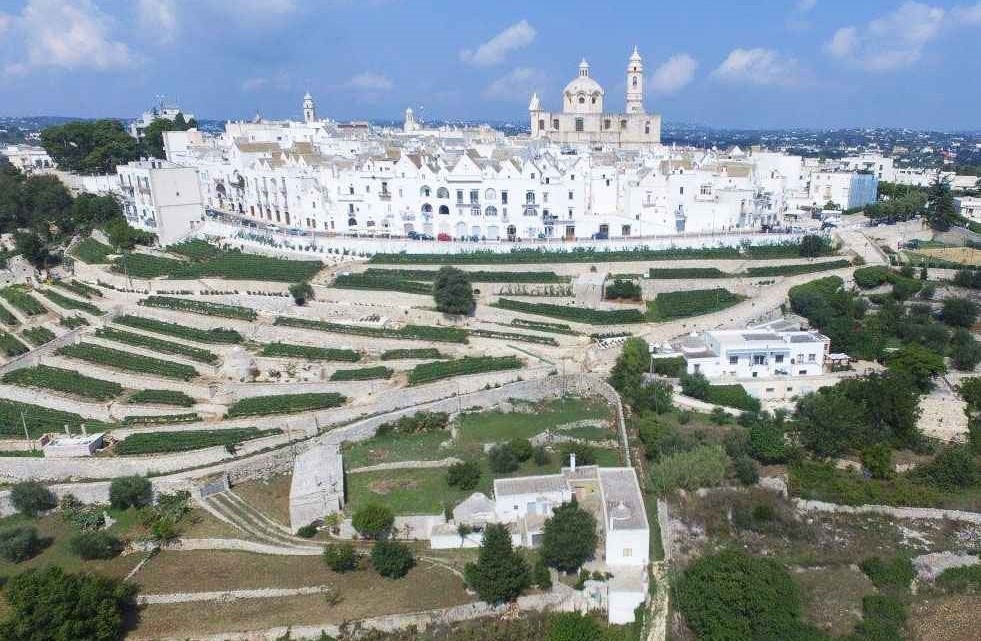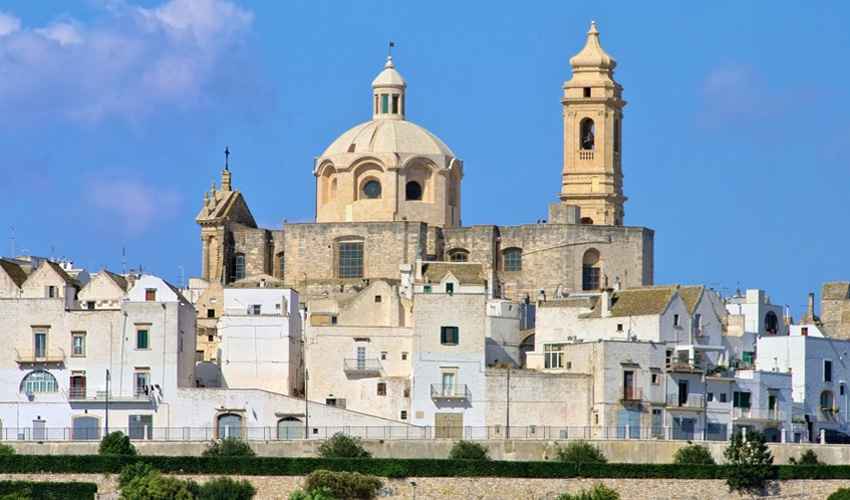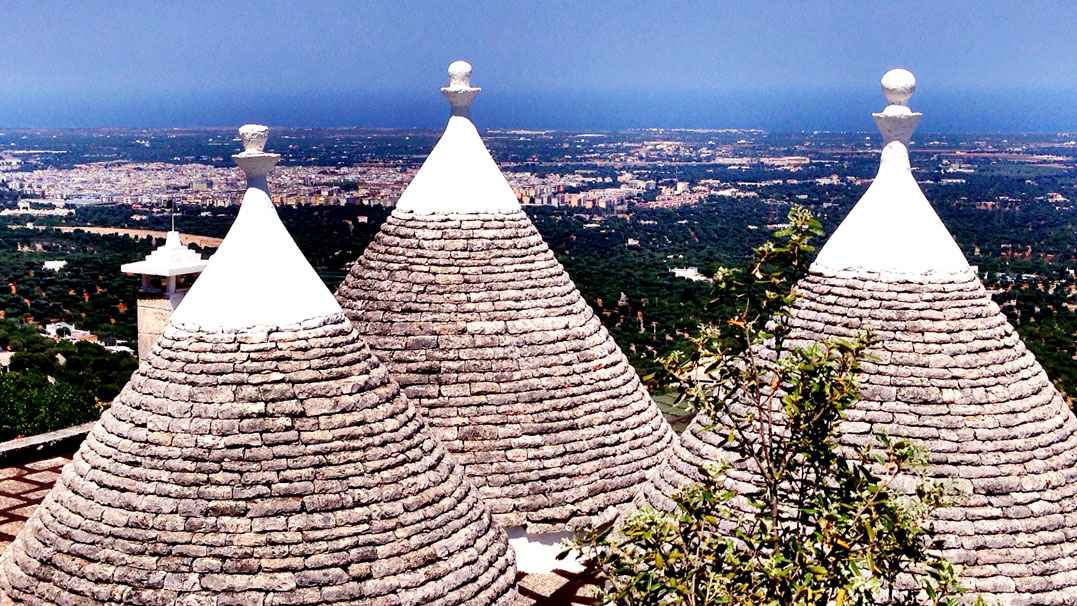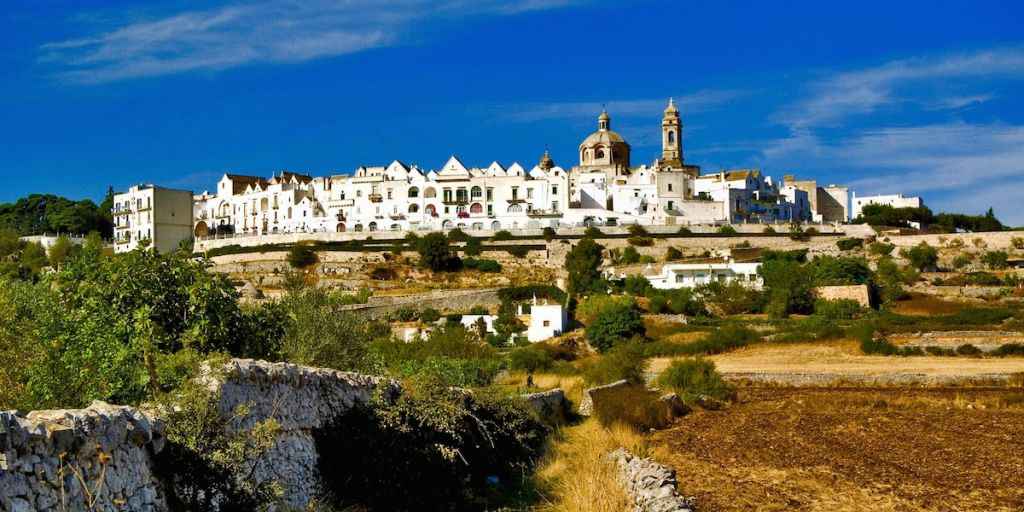



 On the remote origins of this town two local scholars, Father Serafino Tamborrini of Ostuni (1784 - 1869) and the local doctor Angelo Convertini (1771 - 1831), handed down to us historical reconstructions too often seasoned with mythology.
On the remote origins of this town two local scholars, Father Serafino Tamborrini of Ostuni (1784 - 1869) and the local doctor Angelo Convertini (1771 - 1831), handed down to us historical reconstructions too often seasoned with mythology.
We must arrive until the 12th century (1195), in full Swabian domination, to find the first document in which the place called Rotondo and its church of San Giorgio, a sort of rural agglomeration, feud of the Benedictine monastery of Santo Stefano that still exists on the coast near Monopoli. However the formation of the feud, therefore the foundation of Locorotondo, seems to have happened towards the last decades of the X century, coinciding with the birth of the aforementioned monastery commissioned by Goffredo I, count of Conversano. Towards the middle of the 1200s the original feud gradually grew into a real farmhouse. Locorotondo is a city known for its wines and its round-shaped historic center, from which its name derives, which means "round place". It was in fact built on a circular plan with narrow concentric streets and white terraced houses.
 The beauty of the historic center of Locorotondo is represented by its labyrinth of white alleys, with low white washed houses on a hilltop overlooking the Valle d’Itria that end with unusual sloping roofs locally called "Cummerse". Locorotondo looks like a quiet and orderly town, in which it is pleasant to walk among the concentric streets of the historic center with the typical houses with sharp roofs and flowered balconies.
The beauty of the historic center of Locorotondo is represented by its labyrinth of white alleys, with low white washed houses on a hilltop overlooking the Valle d’Itria that end with unusual sloping roofs locally called "Cummerse". Locorotondo looks like a quiet and orderly town, in which it is pleasant to walk among the concentric streets of the historic center with the typical houses with sharp roofs and flowered balconies.
 On the top of the hill on which Locorotondo stands is the Villa Comunale, an obligatory stop to admire the expanse of ancient olive trees and trulli that make up the Valle d’Itria. The surrounding countryside certainly deserves a walk, dotted with trulli, the agglomerations that have sprung up around the so-called “jazzili” are very interesting: groups of single-family trulli with common facilities such as the cistern, the farmyard and a small chapel. 5 kilometers from the city, near the Selva di Fasano is the populous district of San Marco, here is the homonymous rural church built in 1678, with a Latin cross with a bell tower and a roof covered with stones, made with a technique similar to that used for the roofs of the trulli.
On the top of the hill on which Locorotondo stands is the Villa Comunale, an obligatory stop to admire the expanse of ancient olive trees and trulli that make up the Valle d’Itria. The surrounding countryside certainly deserves a walk, dotted with trulli, the agglomerations that have sprung up around the so-called “jazzili” are very interesting: groups of single-family trulli with common facilities such as the cistern, the farmyard and a small chapel. 5 kilometers from the city, near the Selva di Fasano is the populous district of San Marco, here is the homonymous rural church built in 1678, with a Latin cross with a bell tower and a roof covered with stones, made with a technique similar to that used for the roofs of the trulli.
